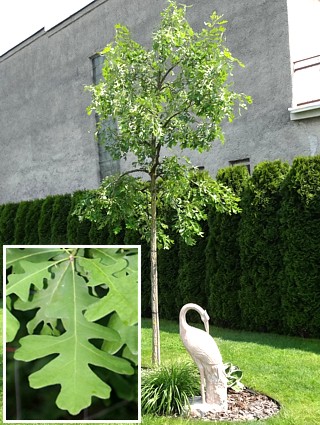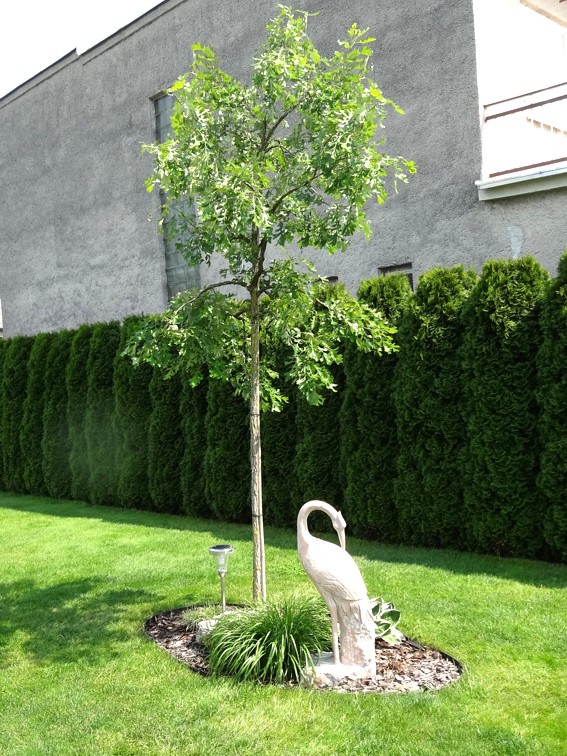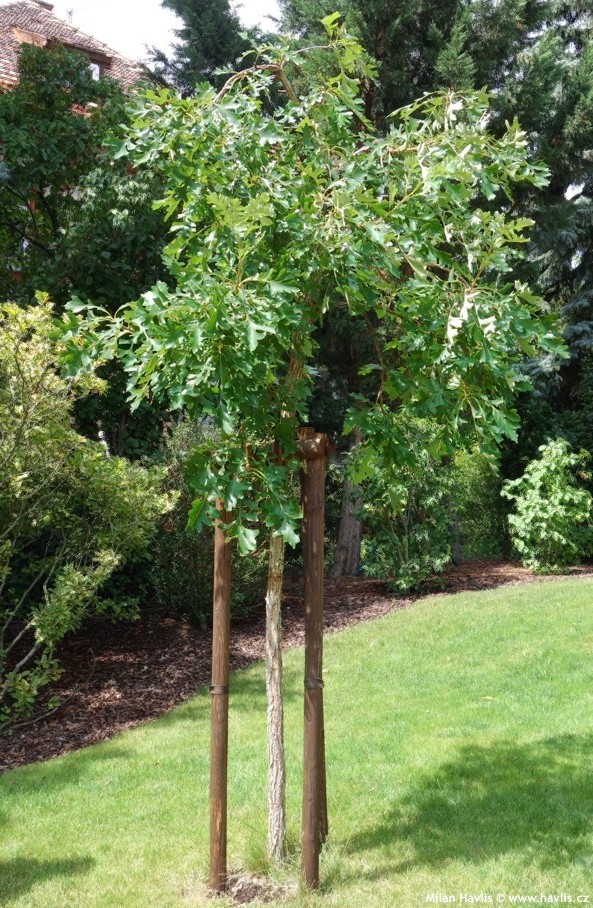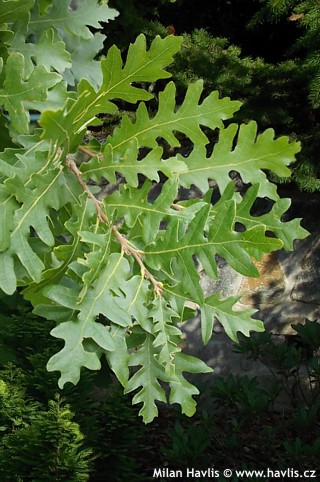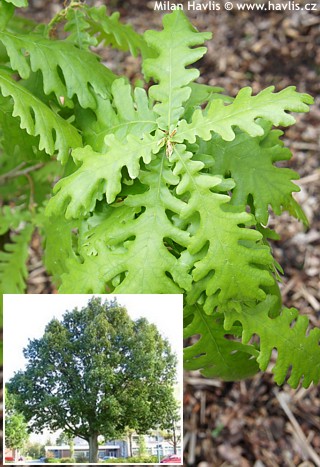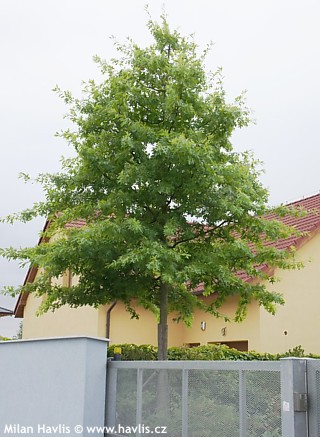Quercus macrocarpa bur oak


Quercus
Oaks are common trees of our natural woodlands. They border our ponds, occur naturally in our mixed forests, and make magnificent specimen trees in our parks and arboretums where less common species or rare varieties can be seen. Bur oak is native to Canada and N.E. USA, and is a unique species with beautiful foliage and bark.It grows possibly at the slowest growth rate among all oak trees, though it is considered a large tree (over 20 m tall) in maturity given plenty of space e.g. in the wild, arboretum or park. There it forms a spreading, dome-like canopy providing excellent shade when 50 or more years old. In gardens it keeps much smaller with more or less pyramidal crown, and can be easily pruned in late winter.
Bur oak naturally grows on dry and calcium-based soils but will adapt to a wide range of soils including acid and moist, and will even cope with standing water if grown there from very young age or seed. The roots are not dangerous for roads and pavements if placed in reasonable distance (it makes a substantial trunk girth), which makes it suitable for city planting. Newly planted trees need to be staked for 2-3 years to establish. It is exceptionally hardy to about -40°C (USDA zone 3).
Last update 16-02-2017
Goods are shipped all over Europe. For Russia and U.K. and for further details please read about SHIPPING OPTIONS HERE.
Are you interested in a serious discount for orders NOV-FEB? Check your options here.
THE PRICES INCLUDE VAT of 15%. For quick conversion you can use 1 CZK = approx. 0.04 EUR
- STANDARD QUALITY - Plants of this group are 1st class quality with number of branches and overall density adequate to their size and age, considering they were container grown.
- DE LUXE QUALITY - This label guarantees a luxurious quality of manually selected plants that, compared to their height and age, are exceptionally dense and beautiful.
- EXTRA - These plants are usually mature and bigger specimens with exceptional overall appearance.
- STANDARD (as described in the plant form) means a tree with a trunk of 190-210 cm and a crown at the top, unless specified differently. The commercial size for trees is their girth measured in the height of 1m from ground.
- HOBBY - These plants are of the same quality as our standard-quality plants but younger and therefore cheaper.
- SHRUB - a woody plant with branches growing bushy from the ground level.
- HALF-STANDARD or MINI-STANDARD - a small tree with shorter trunk, its size is usually specified.
- FEATHERED - These are trees with branches growing already from the base of the trunk and up along the stem.
- GRASSES and PERENNIALS - Sizes given usually read the diameter of the pot or the clump, as specified.












